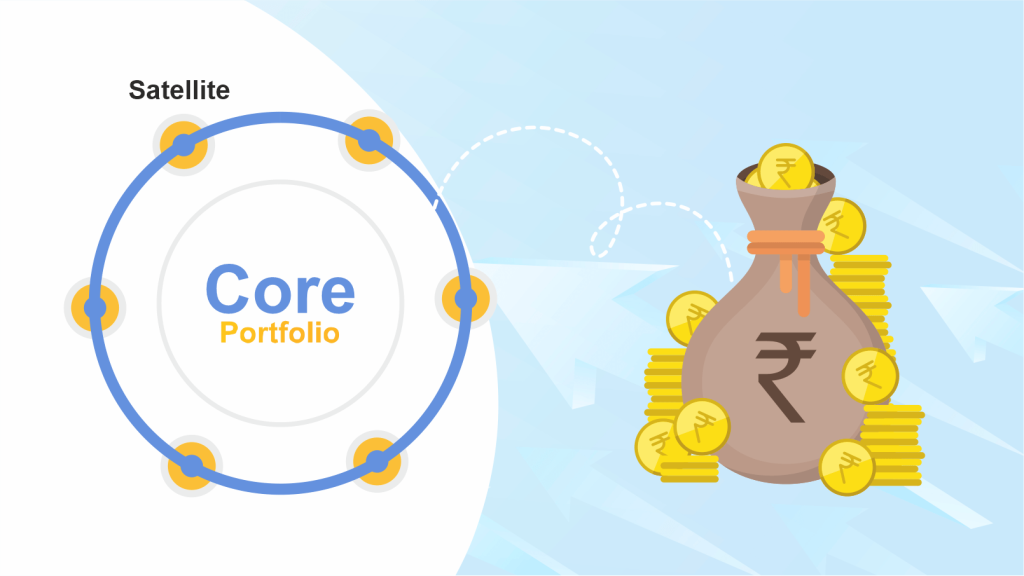A core-satellite portfolio is a strategic way of managing your investments, where the core part of your portfolio is solid and steady, while the satellite investments offer flexibility and potential for higher growth. A top mutual fund distributor often recommends this strategy to those who want both stability and the chance to outperform the market.
What Exactly Is a Core-Satellite Portfolio?
Let’s break it down. A core-satellite portfolio consists of two elements:
Core investments : These are the foundation of your portfolio, typically made up of low-cost, diversified assets that are designed for long-term stability. Think of large-cap stocks, index funds, or blue-chip mutual funds. These core assets aim to provide consistent returns over time.
Satellite investments : These are the exciting part—the extras. Satellite investments could be in sectors or assets that have the potential for higher returns, but also carry more risk. These might include sector-specific funds, small-cap stocks, or international equities.
The key is balance. The core provides stability, while the satellite investments give you the opportunity to take advantage of market trends and seek higher returns.
Why Consider the Core-Satellite Approach?
Now you might wonder, why not just invest in high-growth opportunities all the time? Or, conversely, why not stick only to safe, stable options? The answer is simple: a combination of both can lead to better results with lower risk.
Here are some reasons why a core-satellite portfolio can be a smart strategy:
1. Diversification : A core-satellite approach ensures you’re not putting all your eggs in one basket. The core offers diversification across broad market indices, while the satellite portion lets you take calculated risks on high-potential sectors.
2. Cost Efficiency : The core is often composed of low-cost funds like index or ETF funds, which have lower management fees. This helps you save on costs while still keeping exposure to a broad market. The satellite portion can be more actively managed, focusing on growth areas where you’re willing to spend a little extra on fees.
3. Risk Management : By having a solid core, you minimize risk because most of your portfolio remains in safe, long-term investments. Your satellite investments provide a smaller portion for high-risk, high-reward opportunities without destabilizing the entire portfolio.
How to Build Your Core-Satellite Portfolio?
Let’s say you’re working with Swaraj Finpro to create a core-satellite portfolio. Here’s a step-by-step breakdown:
1. Establish Your Core : Begin by allocating 70-80% of your investments to core assets. These should be large-cap stocks, index funds, or mutual funds that focus on stability and long-term growth.
2. Identify Satellite Opportunities : The remaining 20-30% can be invested in more aggressive and specialized areas. This could be sector-specific funds like technology or healthcare, small-cap funds, or international investments.
3. Rebalance Regularly : As markets fluctuate, the balance between your core and satellite investments may shift. Regular rebalancing is important to ensure that your portfolio remains aligned with your financial goals.
Is the Core-Satellite Portfolio Right for You?
This strategy works well for both new and experienced investors. If you prefer a balanced approach that combines steady, long-term investments with the excitement of growth opportunities, a core-satellite portfolio could be ideal. It allows you to enjoy the best of both worlds: stability from your core investments and potential high returns from your satellites.


